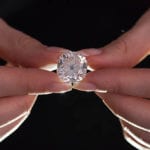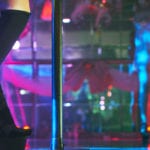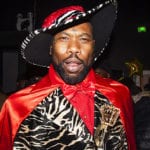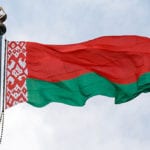 Weird Stuff
Weird Stuff  Weird Stuff
Weird Stuff  Politics
Politics 10 Political Scandals That Sent Crowds Into the Streets
 Weird Stuff
Weird Stuff Ten Bizarre Facts About The Doge Meme
 Our World
Our World 10 Ways Your Christmas Tree Is More Lit Than You Think
 Movies and TV
Movies and TV The 10 Coolest Stars to Set Sail on The Love Boat
 History
History 10 Things You Didn’t Know About the American National Anthem
 Technology
Technology Top 10 Everyday Tech Buzzwords That Hide a Darker Past
 Humans
Humans 10 Everyday Human Behaviors That Are Actually Survival Instincts
 Animals
Animals 10 Animals That Humiliated and Harmed Historical Leaders
 History
History 10 Most Influential Protests in Modern History
 Weird Stuff
Weird Stuff 10 Funny Ways That Researchers Overthink Christmas
 Politics
Politics 10 Political Scandals That Sent Crowds Into the Streets
 Weird Stuff
Weird Stuff Ten Bizarre Facts About The Doge Meme
Who's Behind Listverse?

Jamie Frater
Head Editor
Jamie founded Listverse due to an insatiable desire to share fascinating, obscure, and bizarre facts. He has been a guest speaker on numerous national radio and television stations and is a five time published author.
More About Us Our World
Our World 10 Ways Your Christmas Tree Is More Lit Than You Think
 Movies and TV
Movies and TV The 10 Coolest Stars to Set Sail on The Love Boat
 History
History 10 Things You Didn’t Know About the American National Anthem
 Technology
Technology Top 10 Everyday Tech Buzzwords That Hide a Darker Past
 Humans
Humans 10 Everyday Human Behaviors That Are Actually Survival Instincts
 Animals
Animals 10 Animals That Humiliated and Harmed Historical Leaders
 History
History 10 Most Influential Protests in Modern History
10 Enthralling Facts about the Field of Cloth of Gold
History can give the impression that they were inclined to do the opposite, but Europe’s medieval and renaissance monarchs sometimes spent a lot of time and money on securing peace—or giving the impression that that was what they were doing. The fortnight-long festival of the “Field of the Cloth of Gold” in 1520 is one example.
This event saw old enemies England and France gather for two weeks of friendly tournaments and feasts to strengthen the nations’ new friendship. However, it is believed that both kings had ulterior motives, which caused it to become one of the most extravagant diplomatic exercises ever. Here are ten facts about the fascinating time when Kings Francis I and Henry VIII met up for what would become one of the most famous festivals ever.
Related: Top 10 Royals That Were Absolutely Crazy
10 It Was Really about Young Kings’ Egos
It will come as no surprise to find out that two kings who essentially thought they could party their way to peace were both under 30. France’s Francis I was 25 at the time of the Field of the Cloth of Gold, while England’s Henry VIII was three years older. However, a meeting between the two was actually stipulated in the Treaty of London, a peace treaty agreed upon by the major European powers at the time.
The meeting was officially meant to cement the young monarchs’ friendship and celebrate the end of almost two centuries of war between the two nations. Still, while it was peaceful, it did little to prevent the two young kings from engaging in one-upmanship.
Each wanted to make a statement for the history books about how they saw themselves and their country, which meant making over-the-top displays of wealth, power, and refinement. The result of their efforts to show off was an extravaganza unlike any seen before.[1]
9 Thousands of People Attended
There is no such place as the “Field of the Cloth of Gold.” The actual location of the event was the Pale of Calais, a valley between the towns of Guînes and Ardres in what is today the north of France but, at the time, was ruled by the English. So, how did the meeting get its name? In the spirit of showing off their power and wealth, each king brought with him around 6,000 people.
These enormous entourages obviously needed places to stay, so tents and pavilions were erected. Many of these were constructed from fine and luxurious fabrics such as gold cloth. It is from the opulent accommodation that the event draws its name. However, with many of the guests being nobles, it was not only their accommodation that was luxurious—their clothes were, too. Some of Henry VIII’s party arrived wearing gold coats, which were at first mistaken for armor and briefly caused alarm among the French.[2]
8 The Kings Led Teams in Arms Contests
Part of the political process to achieve peace in the renaissance was to demonstrate readiness for war. This could be done through military competitions and tournaments, which were the main events at the Field of the Cloth of Gold. As many as 300 men from each side, including both kings, competed over the two weeks in one of the three contests available. These were jousting, a type of team battle on horseback called a “tourney,” and combat on foot while separated from opponents by a barrier.
Both Henry and Francis drew acclaim for their jousting, although they competed against volunteers rather than each other to avoid disagreements. However, bad weather led to the contests being called off on several days, so Henry, Francis, and their men began looking for other ways to entertain themselves, which were less weather-dependent. This led to the only time over the course of the event when they did get physical with one another.[3]
7 The Kings Wrestled Each Other
Although he often appears rather portly in portraits, Henry VIII was reportedly a skilled athlete in his younger days. In the 16th century, that mostly meant being good at archery and jousting, but Henry had another passion—wrestling. It was a passion shared by his French counterpart. In fact, for Francis, it was not only a passion but part of his identity. In addition to being the king of France, he was the Duke of Brittany, a region famed throughout his country for the prowess of its wrestlers.
With some of the outdoor activities being canceled at the Field of the Cloth of Gold, the French began to challenge the English to wrestling matches. It proved so popular that even priests got involved. Eventually, an enthusiastic Henry could not help but grab Francis by the collar and challenge him to a match. Henry, however, proved no match at all for Francis, whose finisher was a move called the “tour de Bretayne.” English historians were unsurprisingly hesitant to record King Henry’s humbling. However, he regained some dignity by besting Francis with his longbow.[4]
6 Henry VIII Had a” Portable Palace’ with a Wine Fountain
Attendees at the Field of the Cloth of Gold had never heard of the portmanteau “glamping,” but they certainly knew how to do it in style. However, the sumptuous pavilions of the soldiers paled in comparison to the accommodation of Henry, who had an enormous portable palace erected as a place to hold banquets and parties. It took up an area of around 328 square feet (30.5 square meters) and was almost 40 feet tall (12.2 meters), with four blocks of rooms surrounding a central courtyard.
Designed to look like London’s Hampton Court Palace, it was mostly made from timber, which was covered in a canvas that looked like real stone, and its stained-glass windows led the French to nickname it the Crystal Palace. And if the stained glass windows were not enough to impress the other side, Henry also installed an almost endless wine fountain where his guests could help themselves to a drink.[5]
5 Feasts Included up to 50 Dishes and Even the Sculptures Were Edible
While Henry had his portable palace, the centerpiece of the French camp was an astonishing 120-foot (36.6-meter) tall gold tent. It was quickly taken down when the weather took a turn, so it never hosted any of the feasts that took place. One less luxurious location did not seem to put anyone off, though. The 12,000 attendees got through as many as 29,000 fish, 98,000 eggs, more than 6,000 birds, 2,200 sheep, and an unbelievable 216,000 gallons of wine.
That there were no accidents at the archery range is really amazing. Most of the supplies came from merchants in nearby towns, although the English camp did ship herds of deer and sheep over. At the three main feasts attended by the kings during the event, around fifty dishes were offered, and the finest French and English food of the day was displayed. Swans, peacocks, venison, and even dolphin were served. For dessert, edible sculptures made from marzipan and sugar decorated the tables. Many depicted biblical scenes.[6]
4 Both Kings Tried to Become Prisoners
Alongside material goods and sporting talent, there was one more area in which the kings were fiercely competitive at the Field of the Cloth of Gold, and that was gestures of friendship. Strangely, this saw each king trying to show how submissive they were to the other. Francis went first. In the early morning of June 17, he rode to where Henry was staying in a castle in Guînes. Despite not having been invited, he demanded that the English let him enter and was admitted to Henry’s bedchamber, much to the latter’s surprise.
There, Francis declared himself Henry’s prisoner, the point being to show he trusted Henry enough not to harm him even though he was giving the English king an ideal opportunity to do so. He then helped Henry to get dressed. Although the stunt did demonstrate a lot of trust between the pair, it was hardly the blossoming “bromance” it seemed like on the surface. It also subtly asserted Francis’s right to invade the private space of the other king. Henry repaid him by making his own surprise visit two days later.[7]
3 It Ended with a Giant Fiery Dragon Display
On June 23, the organizer, Cardinal Wolsey, held a mass in a temporary chapel. Wolsey’s temporary chapel was reportedly of similar splendor to Henry’s “portable palace,” as it was adorned with tapestries, silver, and a big bejeweled crucifix. Two organs played music for the mass, and one historian has described Wolsey’s ceremony as having had “as much pomp as if he had been pope.”
But one decoration that caught everyone’s eye that day as it darted across the sky above them was a huge, fire-breathing dragon. It flew high and fast, frightening many. It was actually some kind of kite, possibly pulled along by a wire, and it had some impressive built-in pyrotechnics. Contemporary reports are ambiguous about whether it was meant to be a dragon—a nod to Henry’s Welsh ancestors—or Francis’s personal symbol, a salamander. It might even have been a combination of both.[8]
2 The “Universal Peace” It Aimed for Did Not Last
Cardinal Wolsey had a higher aim when he organized the Field of the Cloth of Gold than simply letting the kings show off or form a friendship. It aimed to secure universal peace among the major powers of Christian Europe so that they could unite in defense against the growing Ottoman Empire in the East. It is easy to see today that almost every human attempt at “universal peace” has failed. Cardinal Wolsey’s was no exception, but at the end of the Field of the Cloth of Gold, it looked like a success.
The most serious diplomatic incident had been Henry arriving with a shaved beard; he and Francis had agreed not to shave them. As usual, it was so that they could compare them. Henry shaved his but was excused by claiming that his wife preferred him without it.
However, only two weeks after the Cloth of Gold, Henry met with the Holy Roman Emperor Charles V. Charles was the other major Christian monarch but was not trusted by the French, who thought he wanted to take the duchy of Milan back from them. The pair agreed not to ally themselves with France for at least two years. Francis and Charles went to war in 1521, and Henry backed the Empire.[9]
1 It Happened Again in 1532, but Was Much Smaller
Despite Henry lending Charles V a hand against France so soon after the Field of the Cloth of Gold, he and Francis tried once more to hit it off in Calais and Boulogne in October 1532. This time, though, there were no lofty goals or pop-up palaces, and Henry was accompanied by only 2,000 courtiers and servants. His entourage included one important new addition: Anne Boleyn, or the Marquis of Pembroke, as he had recently titled her. She was the reason for the visit.
Henry wanted to marry her, but he needed a divorce. Usually, this would be a big no-no in the eyes of the pope—Henry was still Catholic—but Francis was already negotiating with the pope about a marriage for one of his sons. If Henry could only make friends with Francis, perhaps the French king could put in a good word and get the pope’s permission for divorce, or at least an agreement that his marriage to Anne would be publicly tolerated.
Although each king once again played host to the other and some very expensive gifts were exchanged, the pair failed to build a lasting friendship. Henry tried to invade France once again in 1544.[10]








